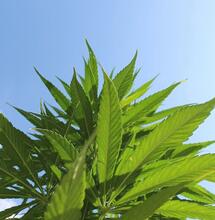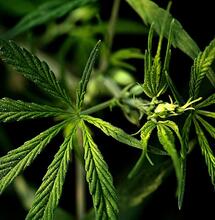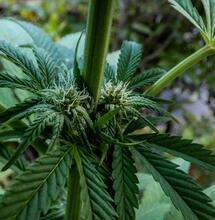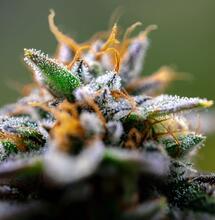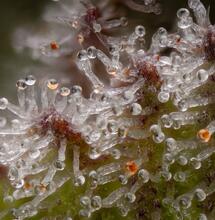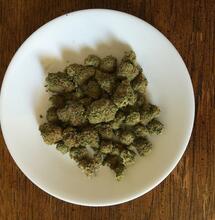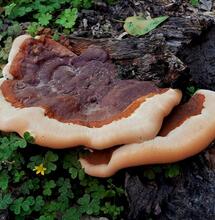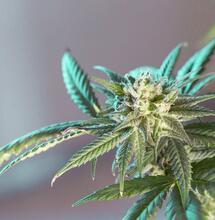Terpenes in Nature

Terpenes are a naturally occurring hydrocarbon found in plants, animals and some insects; they impart a variety of effects and benefits. In cannabis plants, terpenes is what determines the specific smell and taste of the strain. Various health benefits are attributed to terpenes, and much needs to be researched in this regard. But in this article let's focus on terpenes' presence in nature.
Everything You Need to Know About Terpenes in Nature
A 'terpenoid' is a terpene with chemical alterations, either a re-arrangement of its carbon skeleton or the addition of functional groups. Isoprene is a synonymous term; an isoprene or terpene is a five-carbon chain with eight hydrogens saturating the carbon molecules. What chemically defines a terpene is the number of isoprene units. These units are attached in head-to-tail chains or formed into rings and named by the number of terpene groups. For example, monoterpenes are two isoprene or terpene units, sesquiterpenes are three and diterpenes are four.
Terpenes are ubiquitous in the plant kingdom and are often a component of sticky resin secreted by the flower and other parts of the plant. Turpentine is made from plant resin and provides the origin of the word 'terpene'. Resin is believed to carry the Essential Spiritual Essence of the plant, dissolved in the liquid and represented by the odor. Terpenes function to deter parasites and predators, including inhibiting the growth of bacteria and fungi. Chromatography techniques of the mid-20th century have allowed greater detail in terpene investigation. Most terpenes are well known by science but their medicinal actions in Cannabis are still largely unknown.
Rubber is a polyterpene latex extracted by incision into the bark of Hevea brasiliensis (rubber trees), originally grown in the Amazon rainforest. Copaiba (Copaifera langsdorffii or diesel/kerosene trees) secrete a terpene-rich resin that can be used as a diesel substitute, making terpenes a source of biofuel. To this end, the Copaiba plant has been genetically modified to produce more terpene-laden resin that can be used as a cleaner source of energy than corn ethanol.
Some terpenes contribute flavor, odor and other qualities to food; for example, Vitamin A is a terpenoid molecule. Various terpenes within the same plant offer different nutritional benefits - the tomato is an example of this. An experiment changed the genetic expression in a tomato plant to increase the monoterpene associated with tomato flavor and aroma. This change had the unintended additional result of decreasing the lycopene content of the tomato; lycopene is another terpene that has been shown to have anti-cancer properties.
Squalene is a triterpene known as 'shark liver oil' because it is commercially harvested from sharks; this triterpene (six isoprene units) is also produced by the human body as a precursor to steroids. Cholesterol is an example of a body 'sterol'. Squalene is used in the cosmetic industry as a moisturizing agent.
Some insects use terpene molecules as pheromones, though not for attraction. These foul-smelling terpene secretions are emitted by the osmeteria when the insect is threatened.
Plants emit terpenes as a major constituent of their resin. These terpenes imbue the resin with antiseptic properties, inhibiting the reproduction of bacteria and fungi. Cinnamon oil has been shown to have an inhibitory effect on Pseudomonas spp. Neem oil is rich in terpenes and sprayed onto Cannabis plants for natural parasite control. The addition of terpenes to livestock feed is being investigated as a means of reducing the consumption of antibiotics by farm animals. The indiscriminate use of these powerful pharmaceuticals has produced drug-resistant strains that are nonetheless still susceptible to natural products.

What Effects Terpenes Can Produce?
Terpenes are known to have a wide spectrum of effects within the human body. For example, aromatherapy is a system of medicine that utilizes inhaled terpenes for their medicinal effects. In addition, terpenes affect cell membranes and neurological functions - terpenes alter the permeability of cell membranes to certain pharmacologically-active substances.
This is one proposed mechanism for terpene action in Cannabis; terpenes are known to augment and change the effects of THC upon the nervous system. How or why this occurs is still under investigation. There are approximately two-hundred different terpene molecules found in Cannabis. Terpenes in Cannabis are produced within the trichome, the same organ that produces THC, and are made from the same precursor chemical as THC and the other Cannabinoids, geranyl pyrophosphate.
Most of the known terpenes that occur in Cannabis also occur in other plants; the content of these substances ranges in concentration from slight to double-digit percentages. None of these will have produce effects similar to THC when administered independently or when supplemented with Cannabis. Cannabis resin containing Cannabis terpenes and fifty-percent THC has been found to be subjectively stronger in effect than 100-percent THC without the terpene-laden resin.
The different characteristics in the subjective effect of a plant have been associated with its terpene content. Cannabis seed breeders will use the aroma or terpene secretion in a seedling, both male and female, to select a parent plant for a particular strain. The smell and taste of Cannabis is what will innately attract a patient selecting herbal medicine while in a dispensary. Some as-yet-unknown factor in the nervous system responds to the smell or terpene content of the plant; this is why some strains 'feel better' medicinally than others - there is more to consider than just indica or sativa when selecting medicine.
Some terpenes found in Cannabis and other plants have been investigated for their therapeutic effects. Most terpenes possess antimicrobial, antiseptic, analgesic, antioxidant, anti-carcinogen, anti-depressant, anti-inflammatory and muscle-relaxing properties.
Limonene
Limonene is found in most citrus plants (also in peppermint and rosemary) and has a characteristic odor. In conjunction with other terpenes, limonene synergistically increases the permeability of cell membranes to other terpenes; this can cause an increase in systolic blood pressure. Limonene has also been shown to have anti-microbial and anti-fungal properties and is responsible for the antiseptic action of natural citrus soaps. Limonene has anti-cancer properties and has also been used as an antidepressant.
Linalool
Linalool is found in many plants used in aromatherapy (e.g., lavender), as it amplifies serotonin transmission within the nervous system and is known to have anxiolytic and anti-spasmodic properties that mediate nervousness caused by stress. Applied topically, linalool helps skin to heal without scarring.
Myrcene
Myrcene is also found in mangoes and has a similar smell. This terpene crosses the blood-brain barrier and increases cell membrane permeability by THC, which is why consuming mangoes an hour prior to Cannabis can increase and prolong the 'high' that THC imparts.
Also read on Soft Secrets:
